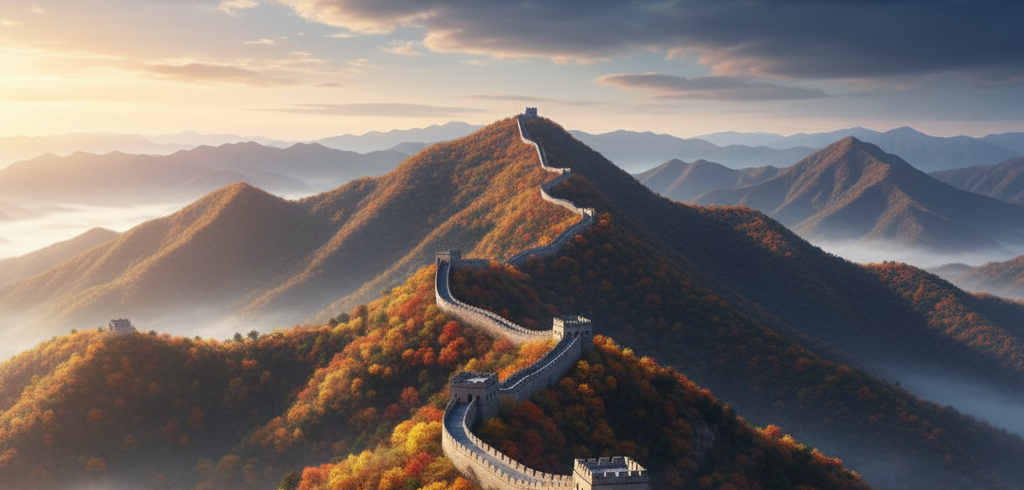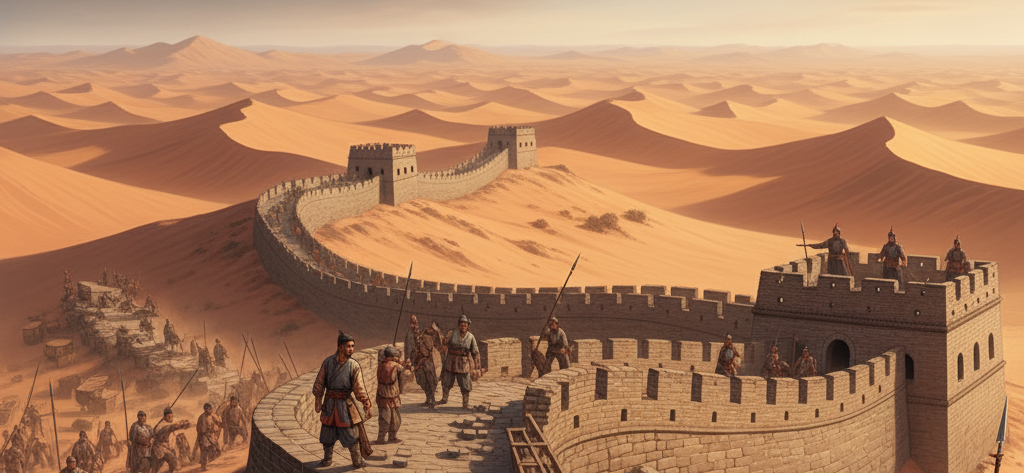The Great Wall of China stands as one of the most iconic symbols of human ingenuity and perseverance, stretching across northern China like a colossal dragon. Built over centuries to protect against invasions, this architectural marvel combines history, geography, and engineering in a way that continues to captivate the world. Spanning more than 21,000 kilometers, it weaves through diverse landscapes, from rugged mountains to vast deserts, serving as a testament to China’s ancient strategic prowess.

Historical Origins and Construction Phases
The origins of the Great Wall date back to the 7th century BCE during the Warring States period, when individual kingdoms constructed walls to defend against nomadic tribes from the north, such as the Xiongnu. It wasn’t until the Qin Dynasty (221–206 BCE) under Emperor Qin Shi Huang that these disparate sections were unified into a single, continuous barrier. Subsequent dynasties, particularly the Han (206 BCE–220 CE) and Ming (1368–1644 CE), expanded and fortified it extensively.
The Ming Dynasty’s contributions are the most visible today, with brick and stone structures replacing earlier earthen ramparts. Construction involved millions of laborers, soldiers, and convicts, who toiled under harsh conditions. Materials were sourced locally—stones from nearby quarries and rammed earth in arid regions—highlighting how geography influenced building techniques. The wall’s watchtowers, beacon towers, and fortresses allowed for rapid communication via smoke signals, enabling quick responses to threats across vast distances.
Geographical Span and Natural Integration
Geographically, the Great Wall is a masterpiece of adaptation to China’s varied terrain:
- Mountainous Regions: In areas like the Yanshan Mountains near Beijing, the wall climbs steep slopes, with sections like Mutianyu featuring dramatic inclines that provided natural defensive advantages.
- Deserts and Plateaus: Crossing the Gobi Desert in the west, it incorporates sand dunes and uses tamped earth to withstand erosion, blending seamlessly with the arid landscape.
- Rivers and Valleys: The wall often follows natural barriers like the Yellow River, enhancing its defensive role while controlling trade routes.
This integration not only made the wall more effective but also influenced migration patterns and cultural exchanges. It marked the boundary between agrarian Chinese society and the nomadic steppes, shaping ethnic interactions for millennia.

Defensive Role and Cultural Legacy
Historically, the Great Wall was more than a physical barrier; it was a psychological one, deterring invasions while symbolizing imperial power. Despite breaches—like Genghis Khan’s conquest in the 13th century—it played a crucial role in several conflicts, including repelling Mongol raids during the Ming era.
Culturally, it has inspired legends, such as the tale of Meng Jiangnu, whose tears allegedly caused a section to collapse. Today, it’s a UNESCO World Heritage site, attracting millions of visitors to sections like Badaling and Jinshanling. The wall’s preservation efforts highlight ongoing challenges from erosion, tourism, and urbanization, underscoring the intersection of history and modern geography.
Modern Relevance and Exploration
In the 21st century, the Great Wall remains relevant as a symbol of resilience amid China’s rapid development. Satellite imagery and archaeological digs continue to reveal hidden sections, expanding our understanding of its full extent. For geography enthusiasts, hiking its trails offers insights into China’s ecosystems, from temperate forests to semi-arid zones.
Whether viewed as a historical fortress or a geographical wonder, the Great Wall invites reflection on how humans have shaped—and been shaped by—their environment. It’s a reminder that borders, both physical and metaphorical, define civilizations.
